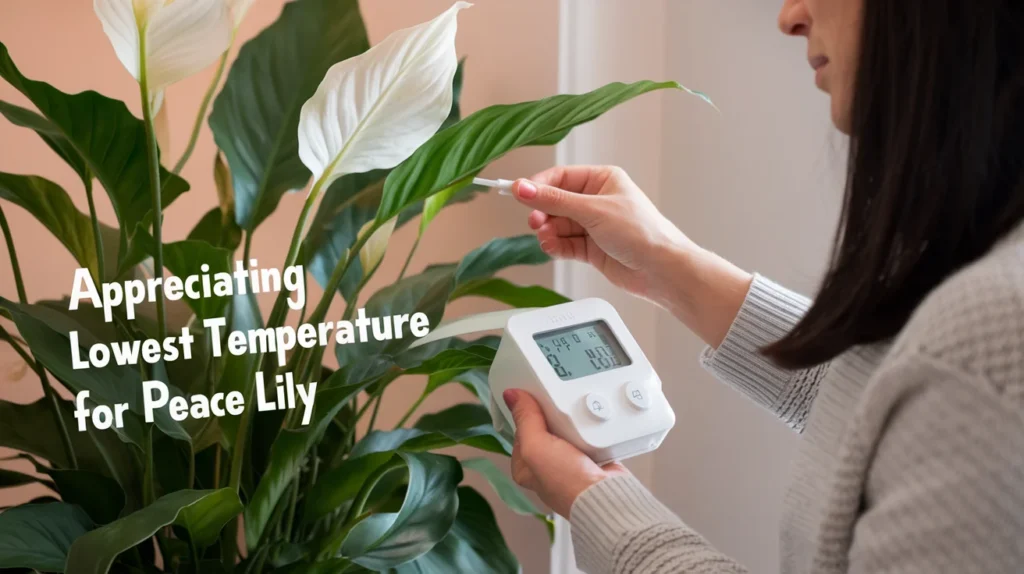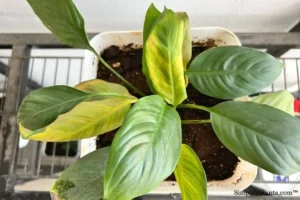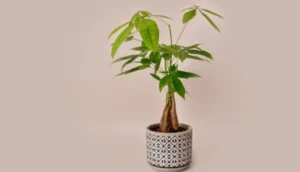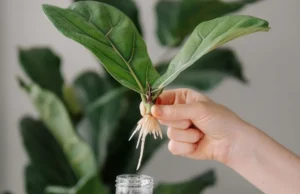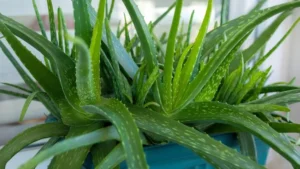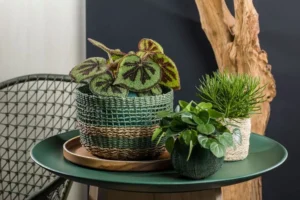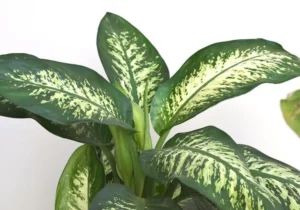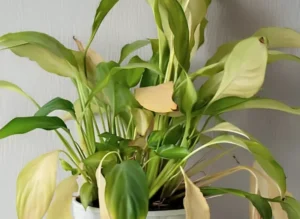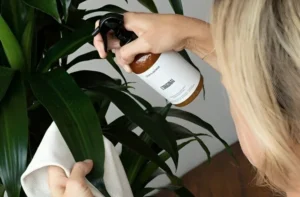When nurturing the peace lily, it is critical to know the lowest temperature that the Peace Lily can tolerate. Is it any wonder that peace lilies are the most common indoor plants? These factors matter. All living things, including plants, have basic needs. They must satisfy these needs to grow and thrive.
In fact, while growing, it is very important to maintain the correct temperature for your peace lily. This is crucial because it helps determine the low temperature tolerance of the plant, which is important for its overall health. This article will cover the best temperature for peace lily care. It will examine how cold affects the plant’s health. It will also explain the reasons for this and how to do it properly.
Peace Lily Maintenance: Optimal Humidity and Temperature Range
Peace Lilies, especially Spathiphyllum, are native to tropical America. They thrive in warm, humid conditions. The temperature that is best for the peace lily falls between 65°F and 80°F, which is also the range for 18°C and 27°C. It enjoys heat and does its best work in a constant temperature. At this point, your peace lily should be in this range. It will then grow well and bloom.
What Happens in Cold Temperatures?
Cold temperatures are not something the peace lily can tolerate. They start showing signs of distress when the temperature falls below 45°F (7°C). Cold draughts and sudden temperature changes may stress the plant. However, if it gets too cold for too long, your peace lily may show the following symptoms:
Wilting Leaves: When the plant is too cold, it may begin to show wilting leaves, which propagate from the top part of the Peace Lily plant. These leaves might also feel soggy and soft.
Brown Leaf Tips: Leaf tip burn is observed in cold weather, where the edges turn brown and remain crisp. This type of damage is usually permanent.
Stunted Growth: Development may come to almost a complete standstill when the plant is exposed to very low temperature thresholds. New leaves may not come out, and the leaves in the plant may not flourish.
Flowers Dropping Off: If your peace lily has bloomed, cold temperatures will cause the flowers to drop off. This will spoil your plant’s beautiful display.
Fungal Problems: Cold, wet weather weakens the secondary elements. This makes your plant vulnerable to root rot and other diseases.
To keep your peace lily healthy, regulate the temperature. Avoid cold drafts from windows and air-conditioning vents.
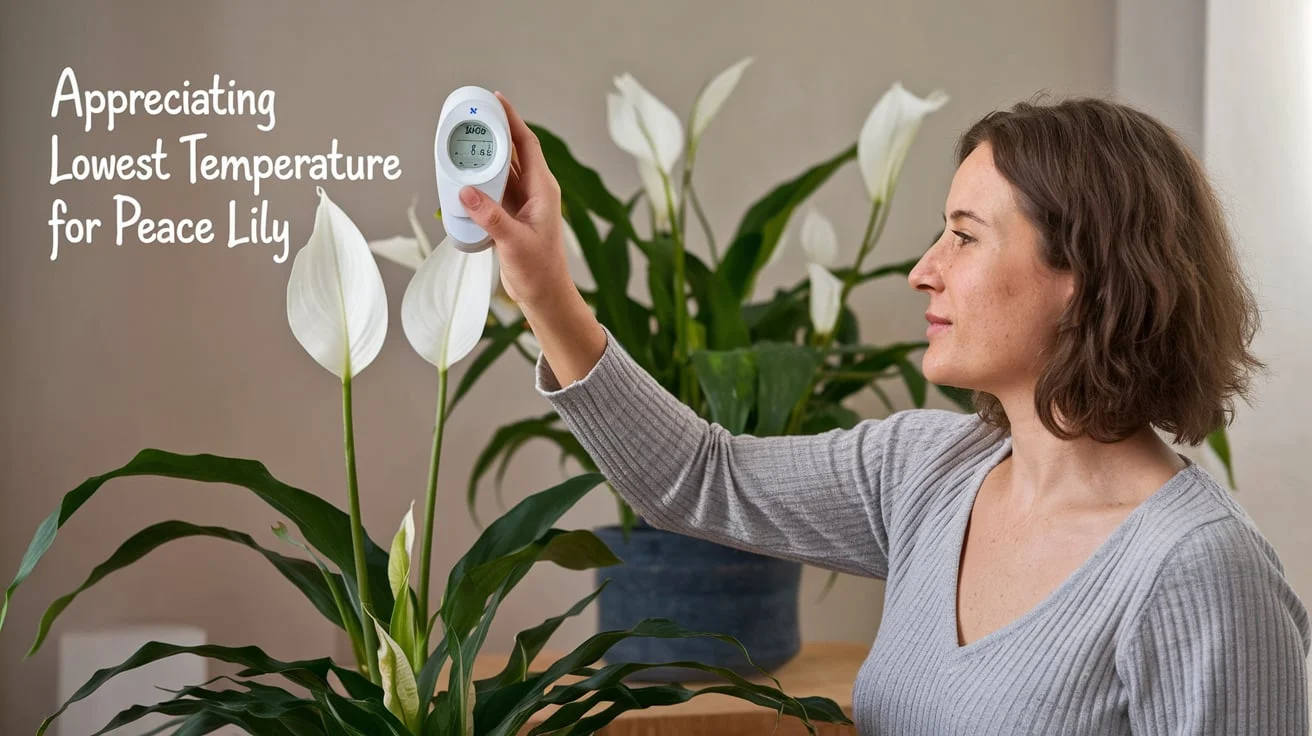
Signs of an Overcrowded Peace Lily
Peace lily can also be affected by overcrowding or overpopulation. For instance, if you have a beautiful plant that, for one reason or another, has stopped thriving, then it is most likely that it has become pot-bound or it is overcrowded. Here are some signs of an overcrowded peace lily:
Root Bound: The roots are growing out of the drainage holes at the bottom of the pot; well, your plant has certainly outgrown the pot.
Decreased Growth: A period has passed and no new leaves, flowers, or a peace lily is not growing; quite possibly, this is the case.
Soil Drying Out Quickly: An overcrowded plant can suck water up quicker than it is needed, making the soil dry out quickly.
Jaw Wrapping: Yellowing leaves as a result of a lack of nutrients due to overcrowding (illness) means that your plant is not receiving proper nutrients.
Ways to Keep Your Peace Lily Safe from Cold Conditions
In order for your peace lily to be healthy, be sure to do the following to protect it from low temperatures:
Cage the Indoor Temperature Monitor: Don’t be too aggressive about how the heaters are set up in the room. A thermometer will help monitor the indoor temperature. Avoid placing your peace lily in rooms that are too cold, especially during the November to March period.
Pick a Proper Assumed Position: Your peace lily should be kept in a warm corner away from cold windows, outside doors, or air-conditioning vents. Stagnant air, especially around temperature changes, will make your peace lily less active.
Utilise Humidifier: To some extent, they add humidity to the atmosphere, as well as when more rain occurs. If it is winter, the air could be very dry; consider getting a humidifier to avoid these conditions for your plant.
Wrap in cases of Straight Down Dryness: It is better not to take your peace lily plant outside at all. (If you are, indeed, violence-prone.) If there is a change in weather conditions when it is moved out to a temperature below 45°F.
Don’t expose it to sudden temperature fluctuations; don’t avoid such irregularities with your plant, for it becomes relatively stressed. Moving a plant indoors and outdoors too often causes one, as well as frequent temperature changes.
Re-potting Your Peace Lily
In the monthly schedule above, repot the peace lily if you notice that it is pot-bound. Here’s how to do it effectively:
Choose the Right Pot. The pot should be one size larger than the existing pot and contain drainage holes.
Use fresh potting soil. One touch of the potting soil will nourish the peace lily, helping it to grow well.
Gently remove the plant: It is important to remove the peace lily in a scooping manner if you wash the pots out.
Place in New Pot: The peace lily should be placed in the centre back of the new pot, after which some fresh soil is added so that the roots are not too deep in the soil.
Water Thoroughly: After repotting the peace lily, it is advisable to water it so that the soil settles.
Conclusion
It is of utmost importance to find out how low the temperature can be so that the peace lily can remain healthy. As long as you protect your plant from extending beyond the desirable temperature limits, or being overcongested with people or other factors in the house, you will enjoy its attractive leaves and beautiful flowers for many years. You should also help your peace lily by avoiding placing it in the direction of cold draughts and providing enough space for growth. If the care is done properly, the peace lily will flourish and beautify the house.

